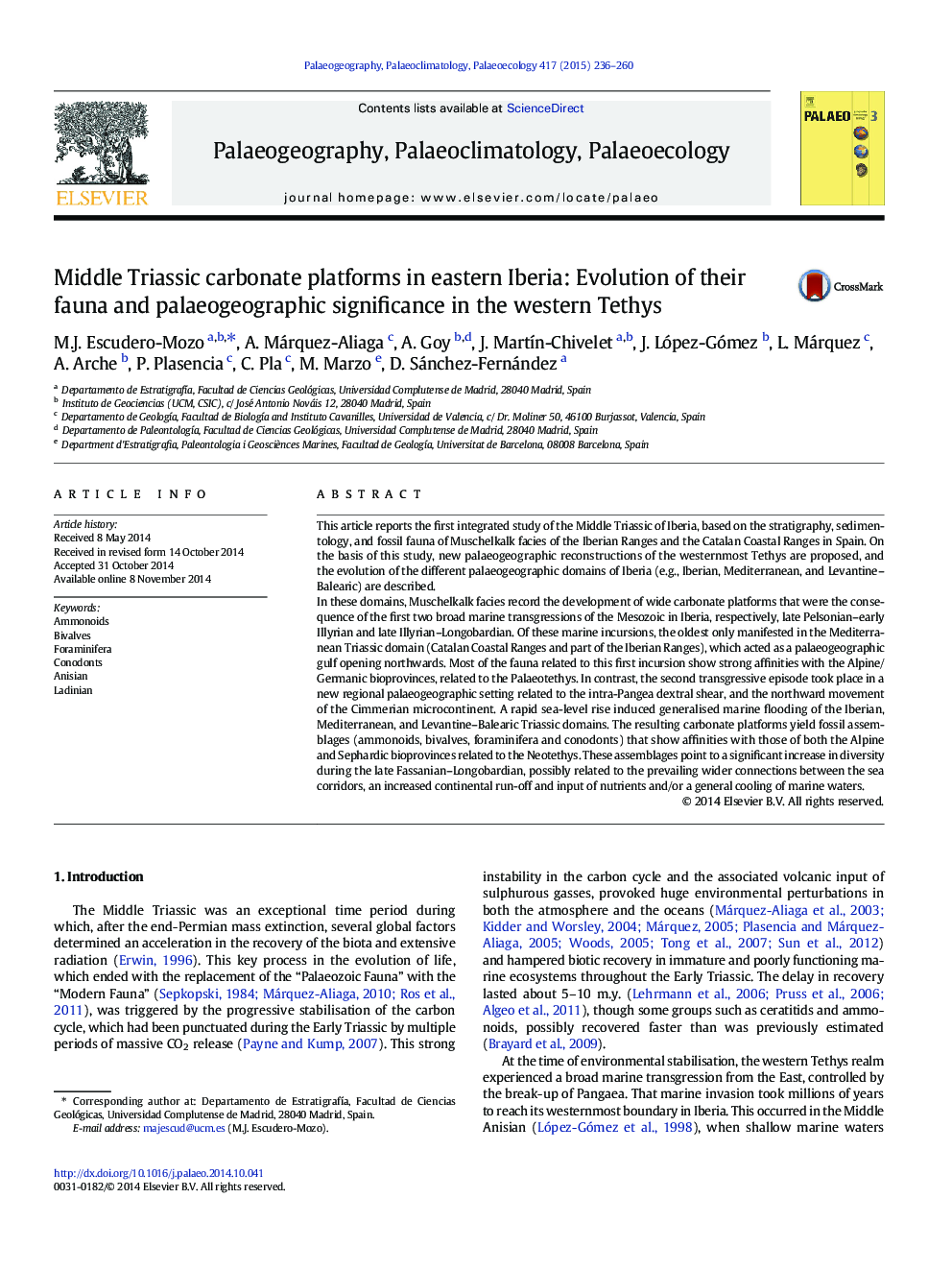| کد مقاله | کد نشریه | سال انتشار | مقاله انگلیسی | نسخه تمام متن |
|---|---|---|---|---|
| 6349869 | 1622173 | 2015 | 25 صفحه PDF | دانلود رایگان |
عنوان انگلیسی مقاله ISI
Middle Triassic carbonate platforms in eastern Iberia: Evolution of their fauna and palaeogeographic significance in the western Tethys
ترجمه فارسی عنوان
سیستم های کربنات تریاس متوسط در شرق ایبریا: تکامل حیوانات و اهمیت پائولوژیکی آنها در غرب تتیس
دانلود مقاله + سفارش ترجمه
دانلود مقاله ISI انگلیسی
رایگان برای ایرانیان
کلمات کلیدی
موضوعات مرتبط
مهندسی و علوم پایه
علوم زمین و سیارات
فرآیندهای سطح زمین
چکیده انگلیسی
In these domains, Muschelkalk facies record the development of wide carbonate platforms that were the consequence of the first two broad marine transgressions of the Mesozoic in Iberia, respectively, late Pelsonian-early Illyrian and late Illyrian-Longobardian. Of these marine incursions, the oldest only manifested in the Mediterranean Triassic domain (Catalan Coastal Ranges and part of the Iberian Ranges), which acted as a palaeogeographic gulf opening northwards. Most of the fauna related to this first incursion show strong affinities with the Alpine/Germanic bioprovinces, related to the Palaeotethys. In contrast, the second transgressive episode took place in a new regional palaeogeographic setting related to the intra-Pangea dextral shear, and the northward movement of the Cimmerian microcontinent. A rapid sea-level rise induced generalised marine flooding of the Iberian, Mediterranean, and Levantine-Balearic Triassic domains. The resulting carbonate platforms yield fossil assemblages (ammonoids, bivalves, foraminifera and conodonts) that show affinities with those of both the Alpine and Sephardic bioprovinces related to the Neotethys. These assemblages point to a significant increase in diversity during the late Fassanian-Longobardian, possibly related to the prevailing wider connections between the sea corridors, an increased continental run-off and input of nutrients and/or a general cooling of marine waters.
ناشر
Database: Elsevier - ScienceDirect (ساینس دایرکت)
Journal: Palaeogeography, Palaeoclimatology, Palaeoecology - Volume 417, 1 January 2015, Pages 236-260
Journal: Palaeogeography, Palaeoclimatology, Palaeoecology - Volume 417, 1 January 2015, Pages 236-260
نویسندگان
M.J. Escudero-Mozo, A. Márquez-Aliaga, A. Goy, J. MartÃn-Chivelet, J. López-Gómez, L. Márquez, A. Arche, P. Plasencia, C. Pla, M. Marzo, D. Sánchez-Fernández,
